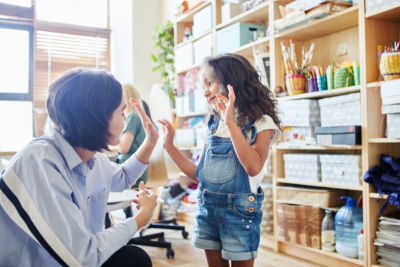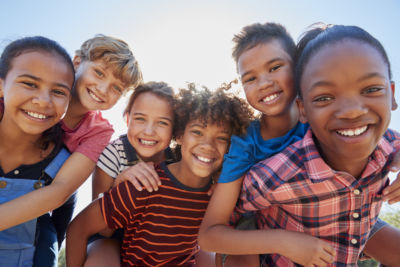One of the most important aspects of a positive school community is relationships—those between staff and students and between the students themselves. Building strong relationships helps us be proactive and preventative in how we approach student behavior; the better we know our students, the more we know how to help them be successful.
Let’s talk about relationships within a school community, why they’re so important to the success of students, and how these relationships can be modeled in day-to-day interactions.
Student-Staff Relationships
Relationships between staff and students are at the core of a school’s community and culture. In fact, research demonstrates that positive, supportive staff-student relationships are a huge predictor of student success – both behavioral and academic. Building relationships with students on a foundation of positivity, trust, honesty, and compassion can be life-changing for both parties, but these relationships don’t develop overnight. The work involved can be characterized in three stages:
- Establish the Relationship. Start with active listening to learn about your students while providing them with space for the relationship to grow.
- Maintain the Relationship. Be proactive and actively work to sustain the quality of the relationship.
- Restore the Relationship. If the relationship is harmed, work toward repairing it with solution-focused strategies.
Below are some productive strategies for all three relationship stages.
- Establishing the relationship
- Learn and use students’ names and listen actively.
- Spend time with each student, showing you know their preferences and interests.
- Hold 1:1 “office hours” with students or small groups to provide more individualized attention.
- Use appropriate communication style (e.g., verbal, visual, picture boards, augmented or assisted communication devices, sign language, full body communication).
- Collaborate with school social workers and therapists around supporting needed skills for relationship-building.
- Maintaining the relationship
- Hold dedicated space for community building and conversation.

- Recognize and celebrate student achievements.
- Provide high-quality attention during all instruction.
- Focus on what’s going well and reinforce behaviors that meet expectations.
- Meet students’ sensory needs to promote engagement (e.g., noise blockers, weighted blanket).
- Remain supportive and helpful even during difficult interactions.
- Hold dedicated space for community building and conversation.
- Restoring the relationship
- Continue to offer help when maladaptive or challenging behaviors occur.
- Create space where students can share perspectives without judgment.
- Actively listen. Repeat back what you heard to check for understanding.
- Facilitate restorative conversations, where both parties take responsibility for any harm caused and create an action plan for success.
- Provide additional processing space as needed during restorative conversations.
- Quickly return to reinforcing expectations and positive interactions after challenging behaviors are processed.
You probably use many of these strategies every day; thinking about where these strategies interact with successful student-staff relationships can help strengthen those relationships and encourage more thoughtful, intentional interactions.
Student-Student Relationships
Positive peer relationships between students create an environment where students feel safe, comfortable, and like they belong to a bigger community. When students feel safe, comfortable, and part of the community, they are more engaged and experience more academic success. To accomplish this, we must provide students with ample opportunity to learn, practice, and receive feedback about peer interactions so they can create, maintain, and generalize their social interaction skills.

Additionally, students should receive specific social skill coaching, particularly when dealing with peer conflict, establishing appropriate boundaries, and in other potentially challenging situations. Here are more strategies students to promote positive relationships between students:
- Actively supervise students and regularly observe peer interactions.
- Provide opportunities for all student voices to be heard by incorporating activities where students share personal items, ideas, and values.
- Arrange seating to promote opportunities for positive social interactions and social acceptance.
- Reference expectations for prosocial behaviors.
- Provide behavior-specific praise when students are meeting expectations.
- Facilitate games that provide students chances to practice and receive feedback on interpersonal skills.
Remember, our ultimate goal is for students to generalize prosocial behaviors outside of the school setting. We can support our students’ ability to build and maintain relationships in their broader communities, such as home, their neighborhood, or their workplace by providing examples of relationship-building in other setting and providing authentic opportunities for practice and feedback.
The ability to build and maintain strong relationships informs our day-to-day interactions with students and how we approach student behavior. By forming strong relationships with our students, we set up the environment to help them achieve success.
Stay tuned for February’s Behavior Tip of the Month!
